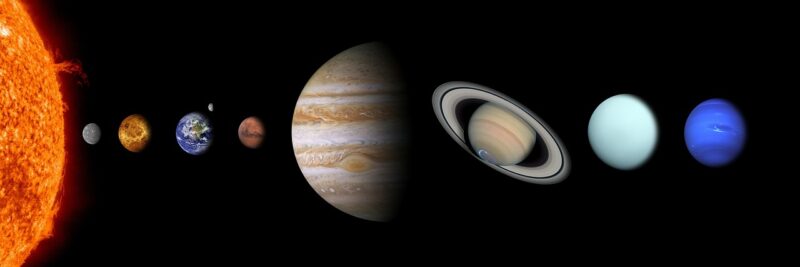The Influence of the Sun on Planetary Orbits and Why It’s Essential for Life
November 12, 2024

The Sun is not just a brilliant star shining in the sky; it is the cornerstone of our solar system, influencing everything from the orbits of planets to the fundamental conditions that allow life to thrive on Earth. Understanding the complex dynamics between the Sun and planetary bodies reveals why this relationship is not only fascinating but also essential for life as we know it.
1. The Sun: Our Planet’s Celestial Anchor
Located at the center of our solar system, the Sun comprises 99.86% of the solar system’s total mass. This immense mass generates a gravitational pull strong enough to bind the planets, moons, comets, and asteroids in their respective orbits.
The Sun primarily consists of hydrogen (about 74%) and helium (around 24%), with trace amounts of other elements. It produces energy through nuclear fusion, where hydrogen atoms combine to form helium, releasing massive amounts of energy in the process. This energy drives the Sun’s radiance and produces the heat and light that are vital to life.
The gravitational force of the Sun plays a pivotal role in maintaining the stability of planetary orbits, ensuring that planets are neither too close nor too far, both of which would drastically alter climate and conditions for life.
2. The Mechanics of Planetary Orbits
Planetary orbits around the Sun are a result of a delicate balance between gravitational pull and the inertia of the planets. When a planet orbits the Sun, it moves in a path determined by:
- Gravity: The Sun’s gravity exerts a constant pull on the planets, keeping them in a curved path instead of allowing them to fly off into space.
- Inertia: As planets move forward, they have inertia that tries to carry them in a straight line. Gravity pulls them in, creating elliptic orbits that prevent them from straying too far from the Sun or spiraling inward into it.
These orbits are not perfect circles; they are elliptical in shape, which means that planets move faster when they are closer to the Sun (perihelion) and slower when they are farther away (aphelion). This changing speed plays a role in seasonal variations on planets like Earth, heavily influencing climate dynamics.
3. The Importance of Solar Energy for Life on Earth
The Sun is the primary source of energy for Earth, making it paramount for the existence of life. Here are key areas where solar energy is essential:
- Photosynthesis: Plants convert sunlight into chemical energy through photosynthesis. This process is fundamental to the food chain, as it provides food and oxygen for nearly all living organisms on Earth.
- Climate Regulation: The Sun influences weather patterns and climate dynamics. The uneven heating of the Earth’s surface causes winds, ocean currents, and weather systems that circulate energy around the planet, creating diverse ecosystems.
- Natural Cycles: Solar energy powers natural cycles like the water cycle, affecting everything from rainfall to oceanic currents and temperatures, ultimately sustaining habitable environments.
Without the Sun’s energy, life on Earth would cease to exist, highlighting the interdependence between solar energy, planetary dynamics, and the biosphere.
4. The Effects of Solar Activity on Planetary Orbits
The Sun is not a static entity; it undergoes cycles of activity including solar flares and coronal mass ejections (CMEs) which can influence space weather. These activities can:
- Affect Satellite Operations: Increased solar activity can disrupt satellite communications and navigation systems on Earth, posing risks for technology-dependent societies.
- Impact Earth’s Magnetosphere: The Sun’s wind can interact with the Earth’s magnetic field, creating auroras and affecting power grids. Significant disturbances can lead to vast electrical outages and damages.
- Potential Orbital Variations: Over long periods, variations in solar activity can affect the orbits of celestial bodies, although these changes are generally minimal on human timescales. Nonetheless, such long-term changes could have implications for planetary climates and conditions for life over geological timescales.
Understanding solar dynamics is crucial for anticipating changes that might affect terrestrial and extraterrestrial environments, accentuating our need to monitor and study the Sun closely.
5. Conclusion: An Interdependent Dance
The Sun’s influence on planetary orbits is a fundamental aspect of the cosmic dance within our solar system. Its gravitational pull maintains planetary stability, while the energy it emits nurtures life on Earth. This intricate interplay not only sustains our blue planet but also serves as a reminder of our connection to the universe.
As we continue to explore and understand this complex relationship, we gain insight into the dynamics that govern our existence and our place in the vast cosmos. From ensuring the survival of life to influencing planetary movements, the Sun remains an eternal anchor in our celestial environment, and its importance cannot be overstated. With ongoing research and advancements in space exploration, the future promises to unveil even more secrets about our closest star and the intricate web of life it sustains.







